You could get away with simply using PGraphics.
The idea is once you have a PGraphics instance you use dot notation to access the drawing functions used to (as long as they're called between .beginDraw() and .endDraw()).
Using noSmooth() you can get it looking pixel perfect.
Here's a basic sketch to illustrate the idea:
// disable anti-aliasing
noSmooth();
// create a PGraphics layer
PGraphics layer = createGraphics(25, 25);
// render a line
layer.beginDraw();
layer.line(0, 24, 24, 0);
layer.endDraw();
// render the line at 100%
image(layer, 0, 0);
// render the line scaled up
image(layer, 0, 0, width, height);

This should do for most cases. (It's only trickier cases with very small values and transparency that might give you headaches)
If for some reason you need a lot more control, you can you always implement your own method of rasterising. Once place you can probably start with is Bresenham's line algorithm
Regarding your code there are a few things that could go wrong:
float deltaPixl = deltaX/deltaY;: if deltaY is zero you'll run into an exception- you're doing integer division for
deltaX and deltaY (potentially making it likely to get 0 for either of the values)
- you should try a
println() statement before the for loop with the start/end values to get a feel if that loop will actually execute or not. Additionally, within the for loop you can println(i) to see if you get the value you expect.
Overall I recommend checking Kevin Workman's How to Debug guide.
Additionally you could use lerp() to calculate linearly interpolated position between the line's start and end points. Pass each coordinate and a normalized (between 0.0, 1.0) value, where 0.0 = at the start point, 1.0 = at the end point and anything in between is on the line (e.g. 0.5 = 50% along the line).
Here's a basic example:
void drawLinePoints(int x1, int y1, int x2, int y2, int numberOfPoints){
// for each point
for(int i = 0; i < numberOfPoints; i++){
// map the counter to a normalized (0.0 to 1.0) value for lerp
// 0.0 = 0 % along the line, 0.5 = 50% along the line, 1.0 = 100% along the line
float t = map(i, 0, numberOfPoints, 0.0, 1.0);
// linearly interpolate between the start / end points (and snap to whole pixels (casting to integer type))
int x = (int)lerp(x1, x2, t);
int y = (int)lerp(y1, y2, t);
// render the point
point(x, y);
}
}
void setup(){
// render points are large squares
strokeWeight(6);
strokeCap(PROJECT);
}
void draw(){
// clear frame
background(255);
// calculate distance
float distance = dist(10, 10, mouseX, mouseY);
// map distance the number of points to illustrate interpolation (more points = continuous line)
int numPoints = (int)distance / 8;
// render points along the line
drawLinePoints(10, 10, mouseX, mouseY, numPoints);
}


For the sake of completeness here's the above snippet using the pixels[] instead:
void drawLinePoints(int x1, int y1, int x2, int y2, int numberOfPoints){
// for each point
for(int i = 0; i < numberOfPoints; i++){
// map the counter to a normalized (0.0 to 1.0) value for lerp
// 0.0 = 0 % along the line, 0.5 = 50% along the line, 1.0 = 100% along the line
float t = map(i, 0, numberOfPoints, 0.0, 1.0);
// linearly interpolate between the start / end points (and snap to whole pixels (casting to integer type))
int x = (int)lerp(x1, x2, t);
int y = (int)lerp(y1, y2, t);
// convert the x, y coordinate to pixels array index and render the point in black
pixels[x + (y * width)] = color(0);
}
}
void setup(){
noSmooth();
}
void draw(){
// clear frame
loadPixels();
java.util.Arrays.fill(pixels, color(255));
// calculate distance
float distance = dist(10, 10, mouseX, mouseY);
// map distance the number of points to illustrate interpolation (more points = continuous line)
int numPoints = (int)distance;
// render points along the line
drawLinePoints(10, 10, mouseX, mouseY, numPoints);
// update pixels
updatePixels();
}




